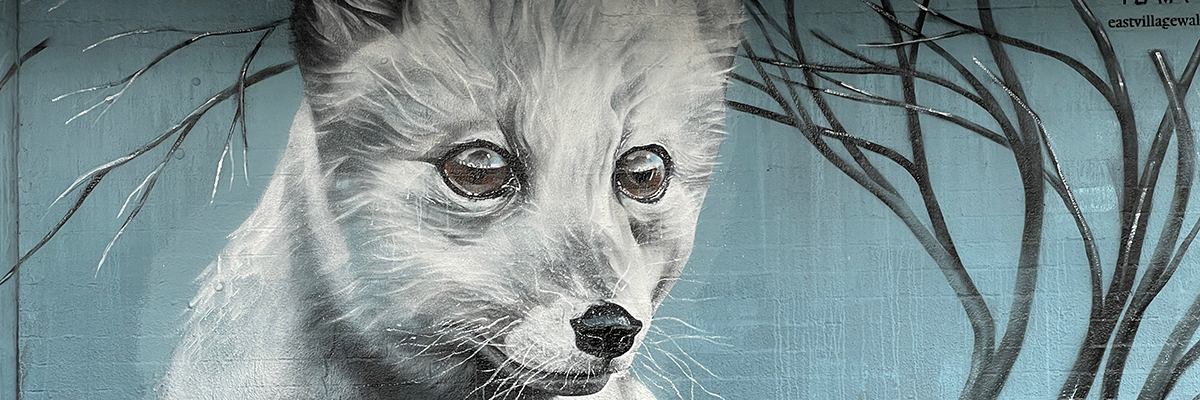Punk Rock Politics, an Arctic fox, a Circumpolar Biome…
New York, a city that never sleeps, truly comes alive in the summer with an influx of international street artists and graffiti writers adorning its walls with fresh ideas and paint. Among them, Vegan Flava, a Swedish artist of global repute, seized his inaugural trip to unveil his unique approach—a synthesis of activism, urban aesthetics, and environmental consciousness. Over the past three decades, his artistic journey has been a contemplative exploration of art’s societal role, driven by his unwavering commitment to illuminate both local and global environmental and social issues. Woven through the fabric of hardcore punk music, veganism, environmentalism, graffiti, and urban art, Vegan Flava’s oeuvre emerges as a profound dialogue on societal complexities, hoping to stimulate your contemplation as well.
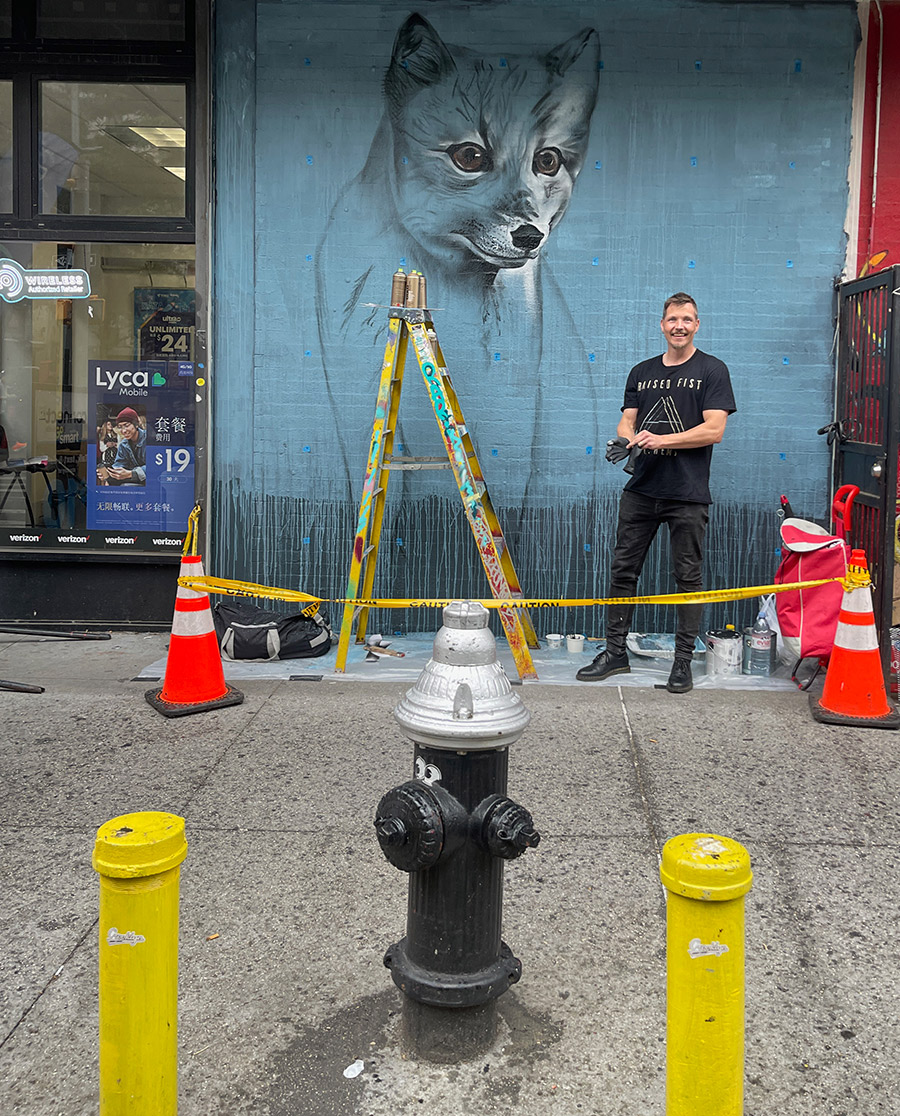
Vegan Flava’s artistic themes crystallize with clarity. He perceives his art as a mirror reflecting society’s nuances. He advocates for a shift in environmental awareness—a transformation that goes beyond human-centric perspectives to embrace a broader ecological responsibility. With an astute focus on the interconnectedness of all life forms, he delves into the intricate relationships between species and ecosystems. During a sweltering summer sojourn to New York, we had the privilege to engage with Vegan Flava, learning about his perspective on the natural world’s interwoven tapestry, our place within it, and the reverberating impact of even a solitary species’ disappearance.
BSA: Tell us a little about yourself, where you live, how long you have been an artist on the streets, other information you would like to share.
VF: I live in Stockholm between Lake Mälaren and the Baltic Sea. I’ve been an artist ever since I could hold a pencil. I discovered graffiti when I was 11 years old in 1989. I sprayed my first wall two years later. I painted graffiti during the 90’s, which evolved into urban art after the millennia. I’ve attended several art schools and graduated with a Master’s in fine art in 2005.
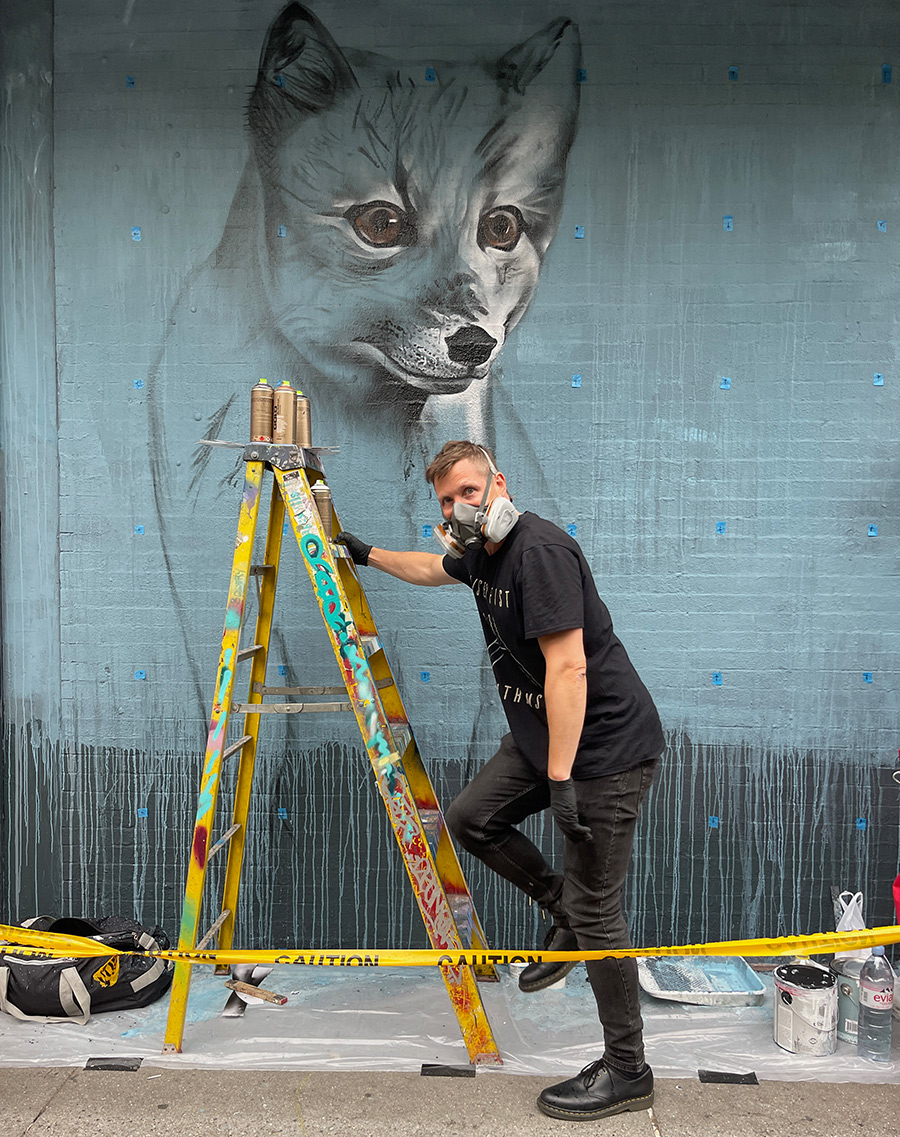
BSA: How did you conceive of being Vegan Flava, and what does it mean to you to adopt this moniker?
VF: It’s something that’s been interesting to explore. My alias Vegan Flava, has been a long-time art project where I’ve looked into how art can reflect society and influence it through urban art. I took this alias 25 years ago, and I was confronting the human-centric world with it.
I’ve noticed along the way that my alias sometimes affects people’s ability to appreciate my art. Art is a wide and open space for complex ideas, and what I’ve experienced is that my alias can be a narrow door that tends to close instead of opening into the broad thoughts, ideas, and topics my art explores. At the moment, I’m considering how my work would be affected if I start using my real name moving forward.
In the early 90s, the day after being at my first hardcore punk concert in the neighboring town of Vänersborg, Sweden, my friends and I formed our city’s first hardcore band. Beginning in 1993, I was active in the hardcore punk music movement, which brought my attention to many social issues. There were songs about how animals were treated in the meat and dairy industry, and at the merch tables at the concerts, info was spread through zines, pamphlets, and books.
The songs questioned human dominance, but it wasn’t until 1998 that I switched to a plant-based diet, and I started to write ‘Vegan’ in my graffiti. Later, I added the word ‘Flava’ to my street alias. In the hardcore scene, I learned that music and art can be used to reflect, change, and build society and not merely be experienced for pleasure. I was greatly affected by the visual language on all printed matter, such as concert posters, band t-shirts, CD covers, and booklets. Parallel to this, I was deeply into skateboarding and graffiti, which all had connections and were different forms of youth-oriented DIY culture with strong visual aesthetics.
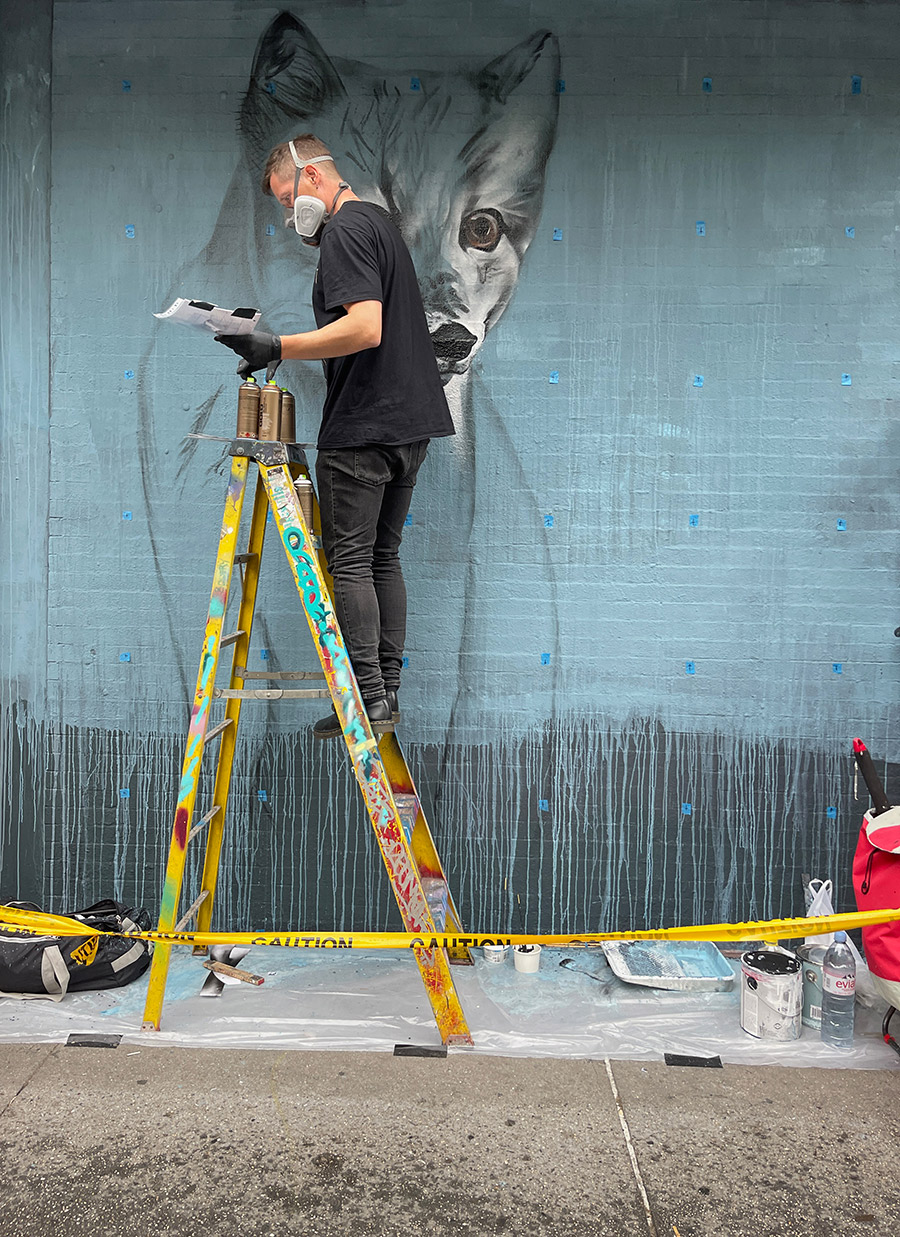
BSA: Your earlier work often featured skeletal remains and dark imagery. Has that changed for you, and if so, how?
VF: Yes, I moved on from it a few years ago. I’ve been working on topics from nature around my hometown, animals, and flowers from the Swedish Arctic. A few years ago, I became interested in how much Swedes know about how the climate crisis affects Sweden. So, I focused even more on exploring local topics.
The Baltic harbor’s porpoise is critically endangered and is the only whale species living in the Baltic Sea. I’ve painted it in several artworks as a symbol for the critical state of the Baltic Sea, which has the largest dead sea floor area on the planet.
In February this year, my solo exhibition had the title Tears Of The Cryosphere and explored the many effects of the loss of water in frozen form. The cryosphere is basically the planet’s cooling system and is deeply part of Swedish identity. I’ve done several land-art pieces on snow-covered frozen lakes with large poems and motifs of endangered animals.
In paste-ups primarily in European cities, but now also in New York, and in murals and studio work, I’m looking into the movements of nature. As the climate warms, plants and animals in the biosphere must adapt to the new environmental conditions – or emigrate if they can. This is also the reality for many humans.
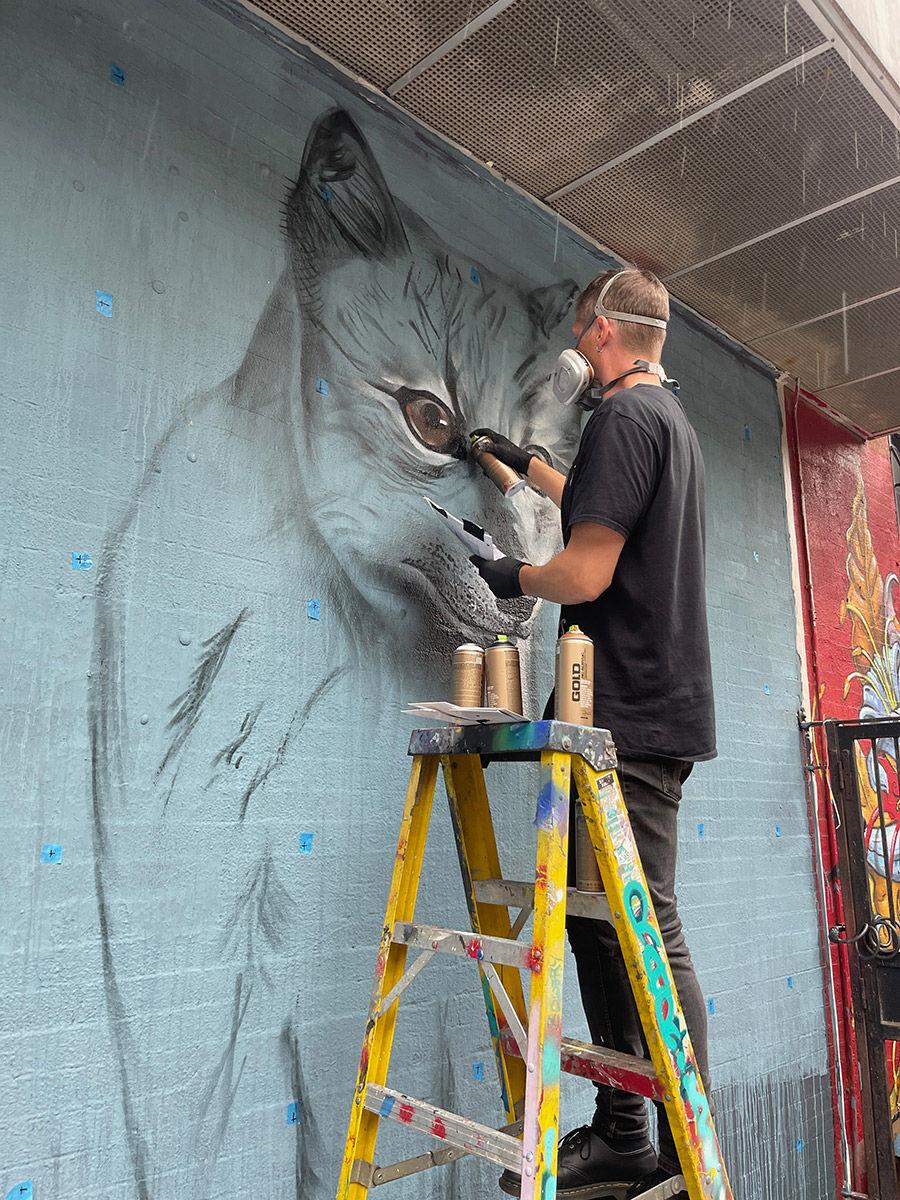
BSA: Is this the first time you have painted in New York? Can you describe what the experience was like for you?
VF: Yes, and I enjoyed every moment of it. It’s been a long-time dream to travel to the US, and I finally made it. My main goal was, of course, to paint a mural, and thanks to East Village Walls, I got the opportunity to paint a small mural in Manhattan. I was happy to meet people from the community and the many photographers who came by my wall and artists and curators from the NY urban art scene during my stay. The city’s art ecosystem was hard to enter, but I really loved New York, and I’m hoping to get an opportunity to go back soon.
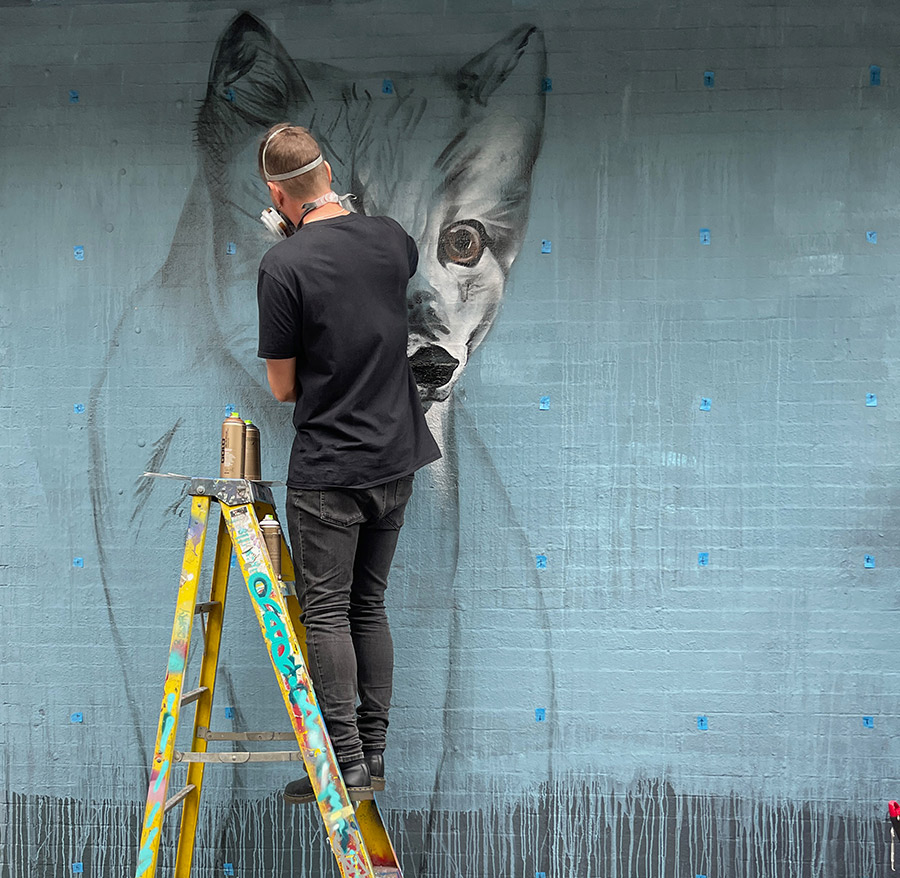
BSA: Can you speak about the arctic fox in this image and its connection to Finnish or Swedish culture and ecology?
VF: The mural’s title is ”Rooted above the taiga,” and it depicts an arctic fox that lives far north above the tree line in the arctic tundra. Taiga is a circumpolar biome, an enormous pine and fir forest belt stretching through Russia, Alaska, Canada, Norway, Sweden, and Finland.
Due to the warming climate, the nature of the tundra is changing and decreasing. I’m painting the Arctic fox as a representative of this biome. It is not a threatened species in North America, but it was hunted to extinction in Finland, and in Sweden, it is listed as critically endangered.
In Sweden, the winter season is shorter, and it often rains in places where it used to snow. Winter trails that used to cross through frozen lakes can now be too weak. It changes the living circumstances of animals, plants, and humans. I’m concerned about the effects of the changing cryosphere, with melting permafrost and glaciers and the decreasing lake and sea ice.
In my art, I’m exploring topics and raising questions about species loss and changing planetary systems. Many species risk extinction before we even get to know them, such as the unique Baltic Harbour porpoise. I often face the question of what happens when some species disappear. Is it really a problem? What benefits do we lose when they are extinct? A species is often linked to several other species, so losing one affects others. We might not see what is already evident for other species. If the entire biomes of the tundra, the taiga, and the cryosphere could ask us, what is your reason for being? How would you answer that question?
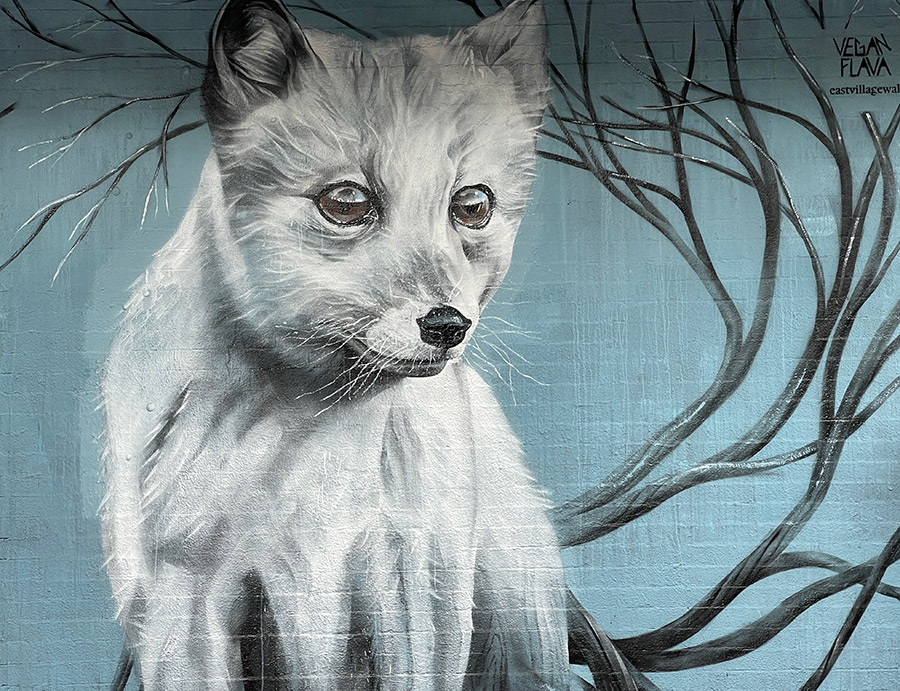
BSA: Artists have myriad roles in society. How do you see your role as an artist who works on the street and whose paintings remain there long after you have finished?
VF: I’m interested in creating my art in dialog with the surroundings and in places that are not always necessarily designated spaces for art. Places where art can be intertwined with daily life and can be discovered in a spontaneous way. The art experience becomes a natural and simple part of the day instead of an active, planned, and conscious choice for a few. I also see public art as a language that expresses something non-commercial and can be a parallel dialog about something else. During my whole life, art of all sorts has challenged and inspired me to evolve as a person, and that’s what I hope my art can be a part of for others.
In Ukraine, Russia has bombed theaters and art schools and ruined public art and artworks. The Kyiv Soloists string ensemble was in Italy when their nation was invaded, and they decided to stay on tour to let the world hear Ukrainian music. Art collectives in Kyiv started producing bulletproof vests in their workshops, and Ukrainian poets and artists were voices of their culture in news channels worldwide. What this clearly shows is that art is producing identity; it is a home.
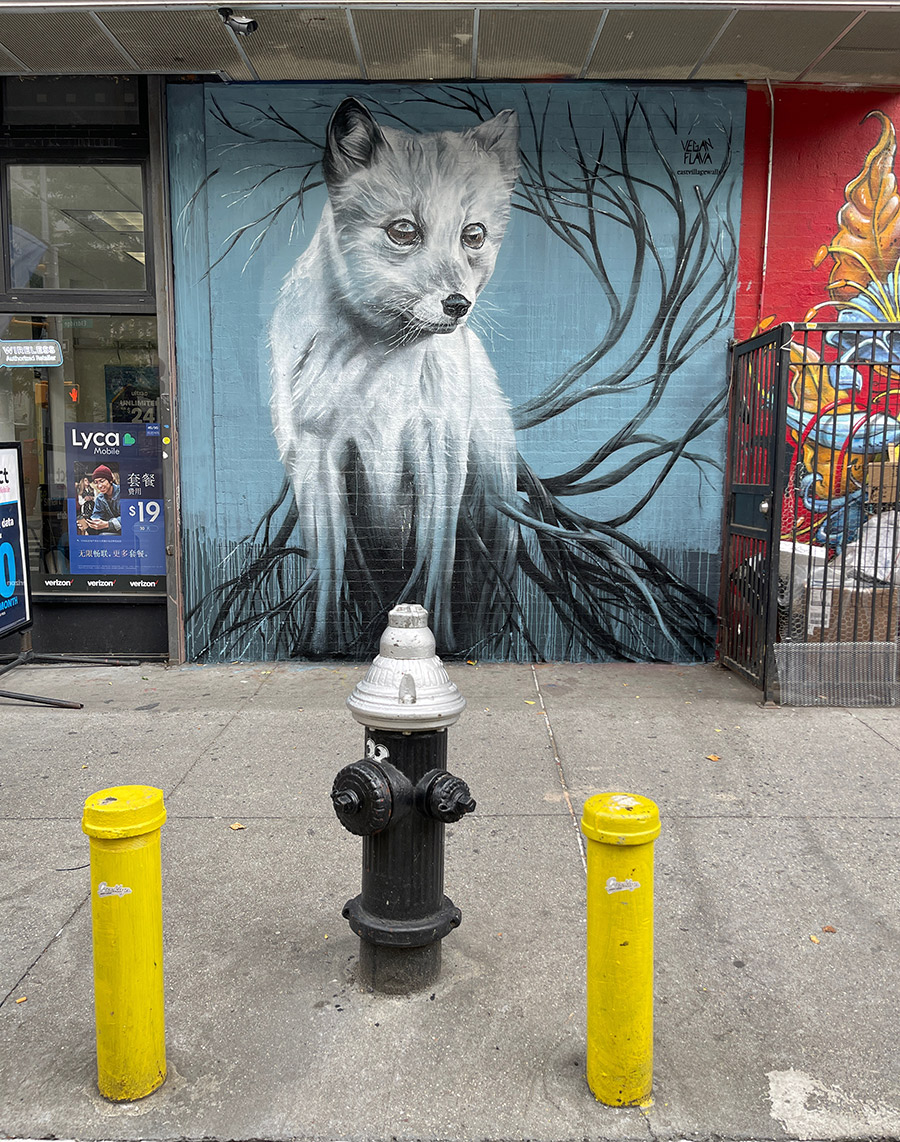
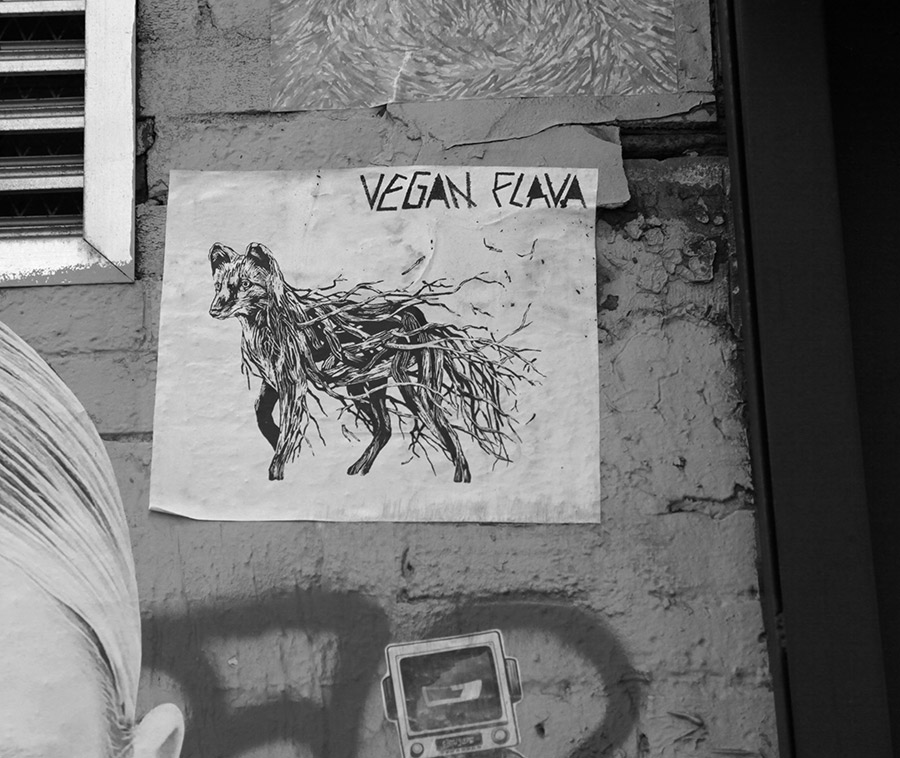
Other Articles You May Like from BSA:
“U marauasce” - "Border Light" The original fires of historical St. Joseph celebrations in Italy neatly coincided with pagan rituals of burning bonfires at the Spring equinox. It was a perfect act of ...
The new exhibition “Martha Cooper: Taking Pictures” is on view at the URBAN NATION Museum – a six-decade retrospective of Martha Cooper’s photographic work. Through photographs and personal objects, ...
Nothing to lose your head about, but you’ll be thrilled to hear about the long-anticipated release of the new monograph by the ingenious troublemaker and largely incognito Chicago Street Artist DONT ...
We are thrilled to once again announce the Martha Cooper Scholarship, in partnership with Urban Nation. This scholarship offers a promising photographer the chance to spend 10 months in Berlin in 202...
Welcome to BSA Images of the Week! "It’s the only time of the year when New York City smells good,” says your cranky Uncle Jaime about the flowers and blossoms everywhere as he stretches on t...
 BROOKLYN STREET ART LOVES YOU MORE EVERY DAY
BROOKLYN STREET ART LOVES YOU MORE EVERY DAY